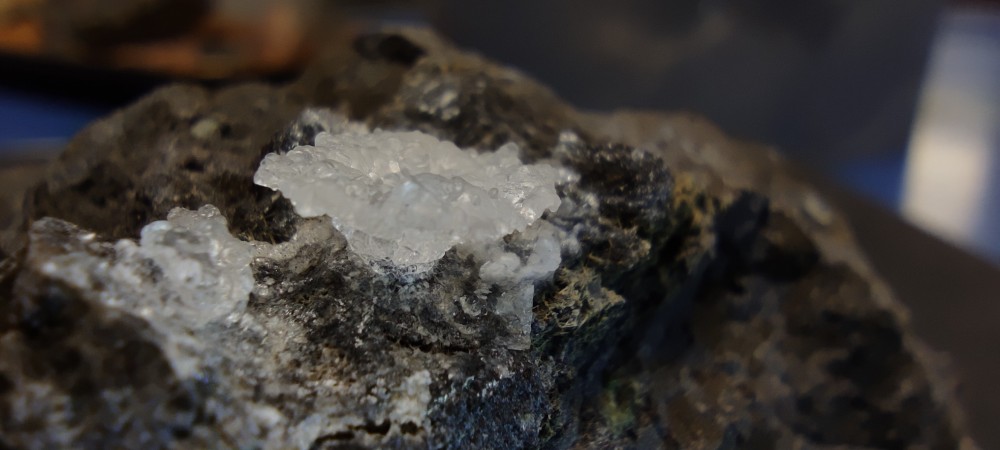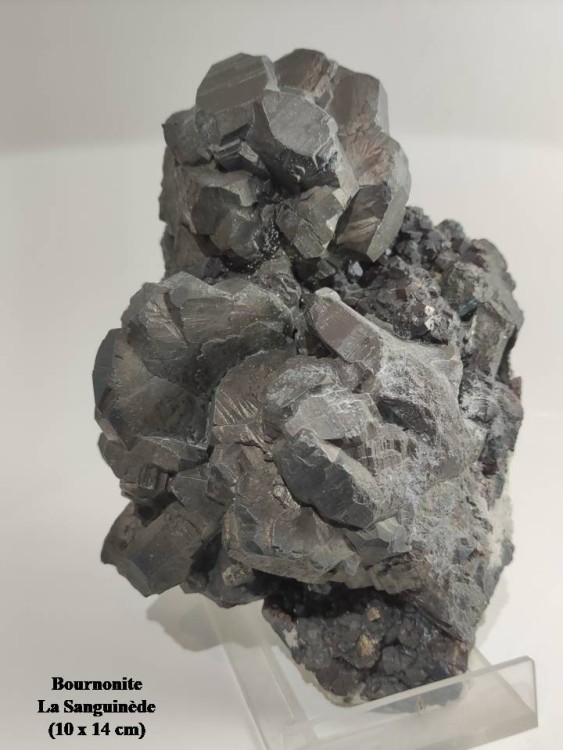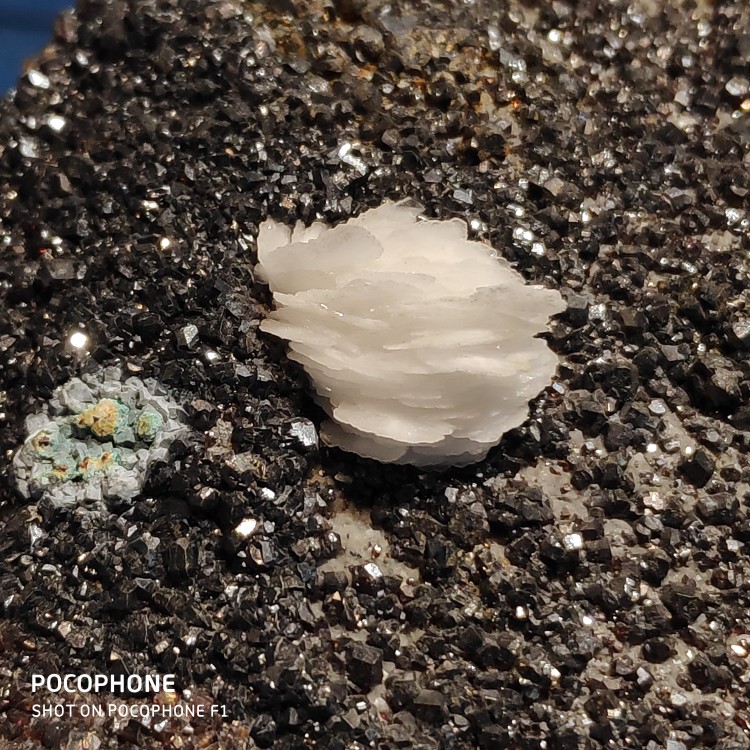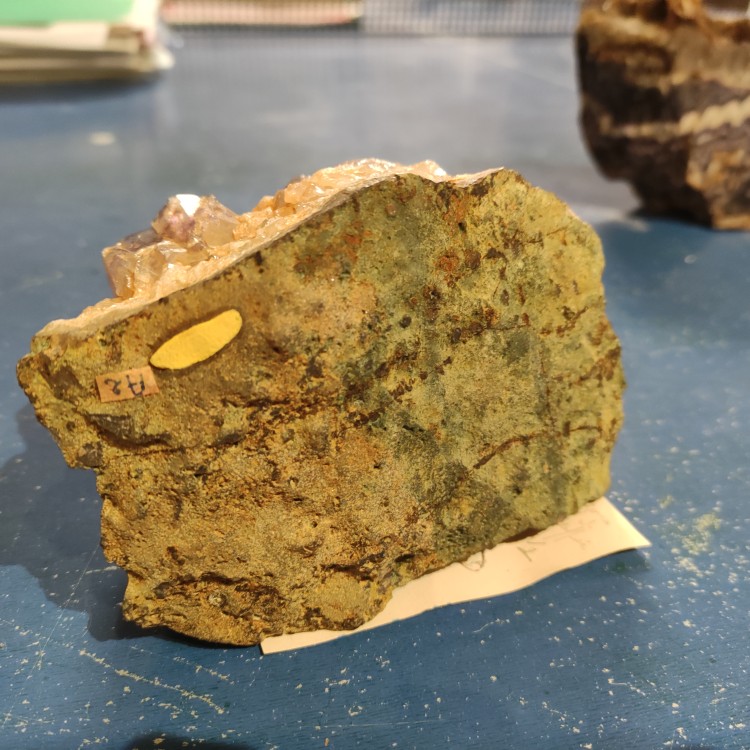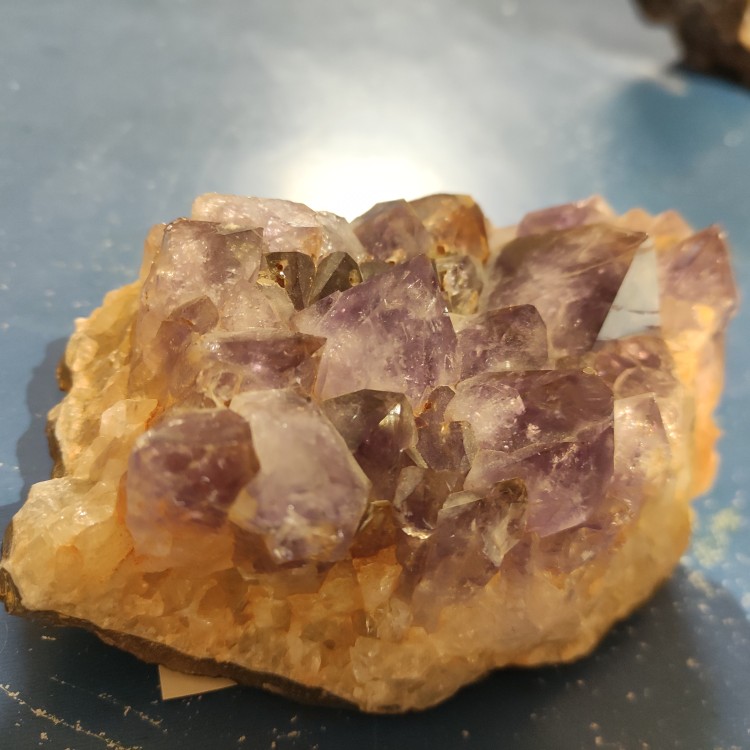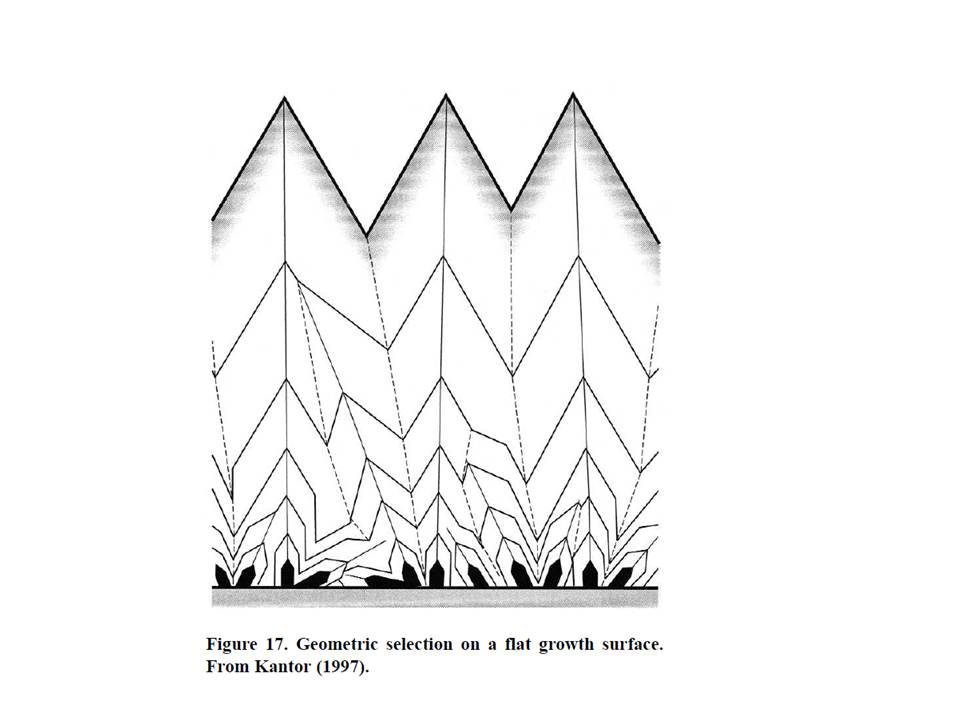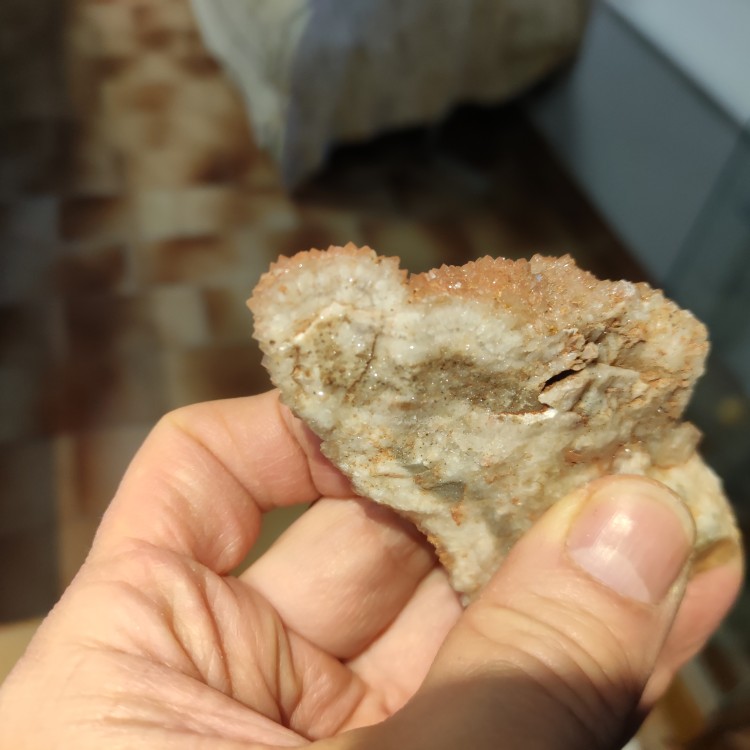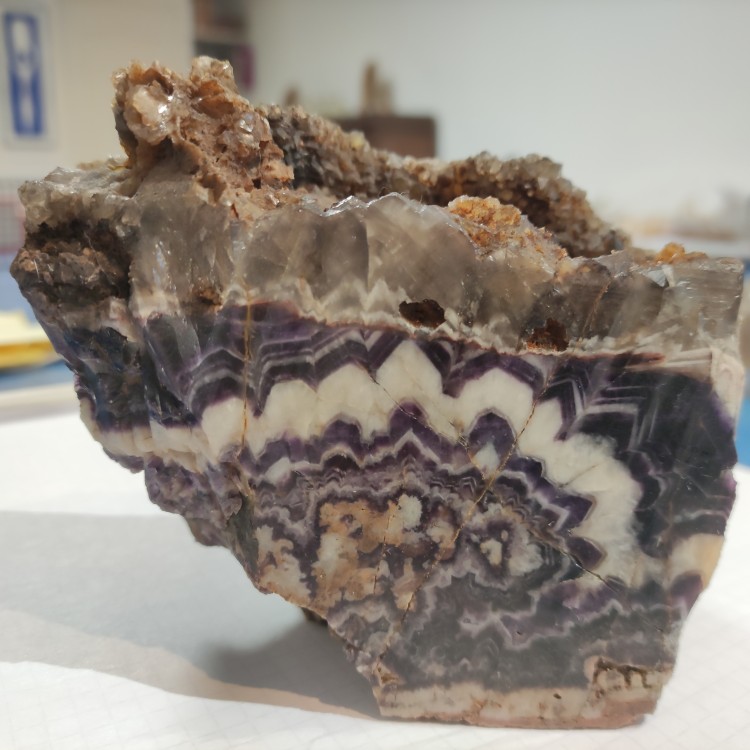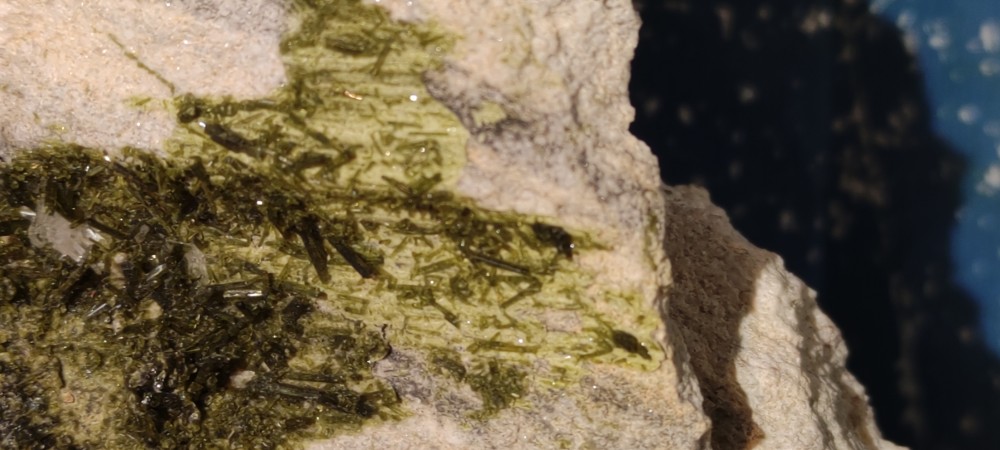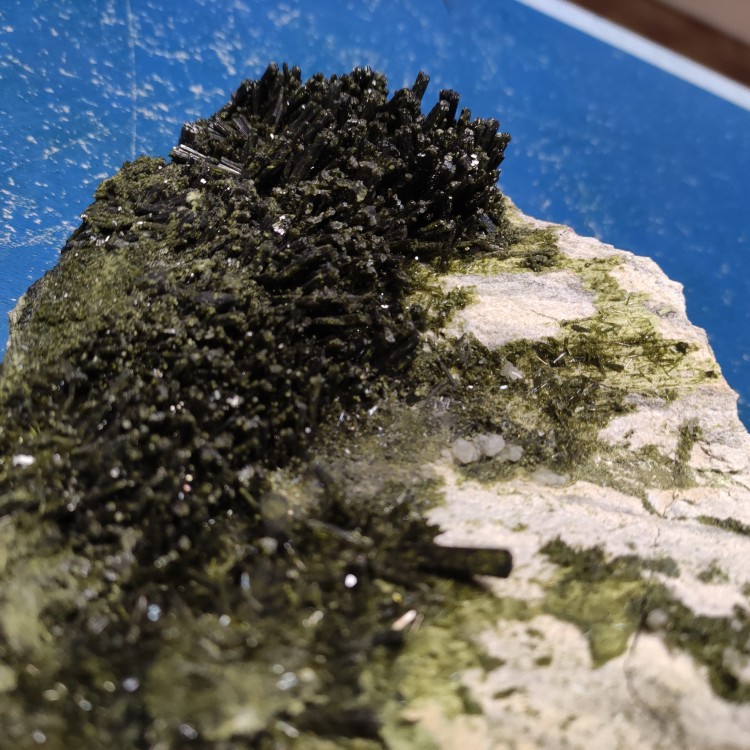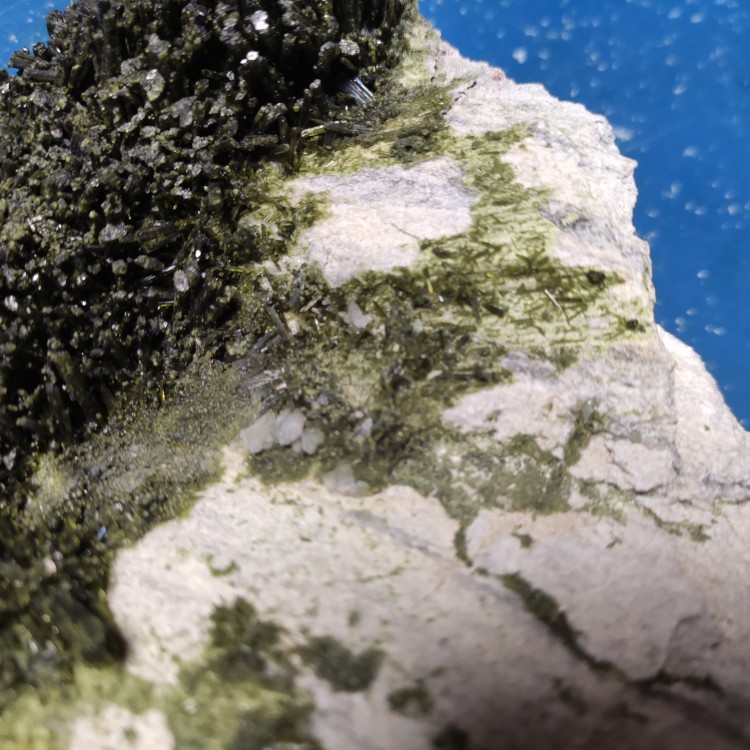Quelques-uns des principaux sujets de Géoforum

▲ Bourse minéraux et fossiles à PARIS ▲ |

Vente et achat de minéraux sur Internet
Voir le nouveau contenu de Géoforum
-
Compteur de contenus
102 -
Inscription
-
Dernière visite
Type de contenu
Profils
Forums
Galerie
Blogs
Boutique
Tout ce qui a été posté par Pointcarré
-

Mineralogie de la Savoie & de la Haute Savoie
Pointcarré a répondu à un sujet de mines85 dans Forum Minéraux et Minéralogie
Bonsoir Je cherche des photos de filons de quartz "blancs" qui déboucheraient sur des fours de quartz fumé (l'encaissant étant granitique). J'ai cru comprendre que cela existe dans le Mont-blanc. Merci d'avance -

Légende familiale
Pointcarré a répondu à un sujet de MALOLAM dans Demandes d' identification de minéraux
Quelques tests de base : - La dureté du verre est entre 4,5 et 6,5. Il faut essayer de rayer avec un coin pointu, puis essuyer le verre et regarder à la loupe si besoin. (différence entre trace (poudre qui s'en va) et rayure (sillon qui reste)). Il faut être précis car la calcédoine, comme dit Greg, est entre 6.5 et 7. - Un test à l'acide (avec du vinaigre au pire). effervescence ou pas (prêter l'oreille) - Peser la pierre P ( en gramme), mesurer son volume V en la plongeant dans un grand récipient gradué rempli d'eau (doseur de cuisine). Le volume supplémentaire donné par la graduation est le volume de la pierre. Calculer la masse volumique P/V (en gramme/litre). ( la densité de la calcédoine : 2.5 est voisine de la moyenne des verres) - Sur une céramique, voir la couleur de la trace (en la frottant sur la céramique) -

Hyalite ou encore de ..de...
Pointcarré a répondu à un sujet de phénacite2 dans Demandes d' identification de minéraux
Si vous regardez le lien c'est expliqué : https://planet-terre.ens-lyon.fr/ressource/opale-peridotite-Baumes.xml Les échantillons analogues à celui présenté dans la photo, ont été trouvés sur place, adhérents à la coulée. Ils ont été prélevés avec leur orientation initiale.(statistique>100). C'est "au toit" des vacuoles que la hyalite se constitue. Effectivement dans les éboulis cela n'a pas de sens au niveau cristallogenèse. -

Hyalite ou encore de ..de...
Pointcarré a répondu à un sujet de phénacite2 dans Demandes d' identification de minéraux
Super, je vais essayer. Pour ceux que ça intéresse, il y a un article sur la formation de ces opales sur Planet Terre le site de l'ENS : https://planet-terre.ens-lyon.fr/ressource/opale-peridotite-Baumes.xml -

Hyalite ou encore de ..de...
Pointcarré a répondu à un sujet de phénacite2 dans Demandes d' identification de minéraux
Comme c'est la saison des girolles, voici une opale Hyalite " de saison" . Taille 8mm ; provenance Caux 34. -

Vos photos de septarias cristallisés ou en tranche
Pointcarré a répondu à un sujet de roc provencal dans Forum Minéraux et Minéralogie
Bonjour Pour répondre à la question de Denis, voici deux articles parus récemment sur Planet -Terre, le site Internet de l’École Normale Supérieure. Le premier présente un modèle de genèse des septarias : https://planet-terre.ens-lyon.fr/ressource/septaria-formation.xml Le second détaille les principaux minéraux présents au sein des septarias et leur cristallogenèse respective : https://planet-terre.ens-lyon.fr/ressource/septaria-cristallisations.xml Bonne lecture Question de Dennis (désolé) -

Les minéraux de Saint Laurent le Minier (Gard)
Pointcarré a répondu à un sujet de Théophraste dans Forum Minéraux et Minéralogie
Barytine sur blende A la gauche du nuage blanc, une brume bleutée probable vestige d'une petite bournonite ... -

Bourse de Narbonne 19/20 août 2023
Pointcarré a répondu à un sujet de Steph6649 dans Conférences, sorties, voyages, expositions,...
Superbes épisodes de croissance. Merci pour cette photo -

La mine, les affleurements et les minéraux de Villecun (34)
Pointcarré a répondu à un sujet de Michel de Champigny dans Forum Microminéraux
Merci pour ces photos incroyables. Pour la détermination de ces minéraux, hormis la chalcotrichite, comment a t elle été faite? Est ce qu'il y a un labo qui s'est intéressé au sujet afin de connaître la paragenèse ? Par exemple pour la pseudomorphose en silice ? (C'est test acide, dureté? , trace ...) Personnellement, j'ai commencé un travail sur les conditions de cristallogenèse de ce site (thermodynamique de l'intrusion d'un dyke et température d'interface, croissance des whiskers ... )Tu peux me contacter en MP si tu es intéressé. Cordialement -
-
Magnifique ! J'ai les globes oculaires qui sont tombés comme les deux extraordinaires bouboules marrons. 🤩 Superbes photos ! A t on avis ce sont des dislocations vis qui font ce genre de tiges ? Est ce que c'est un type de croissance dendritique ? Je ne connais pas la géol de ce coin. En tout cas c'est comme pour olmet & villecun, c'est un véritable feu d'artifice.
-

Minéraux, mes dernières acquisitions...
Pointcarré a répondu à un sujet de pegasus dans Forum Minéraux et Minéralogie
Merci de ces photos. C'est effectivement différent des sceptres de Namibie. On semble voir, comme disait Orléans, des zones de croissance distinctes. Je me demande si ce sont des amorces de sceptre interrompues fautes de matière. Très intéressant. Je viens de voir l'inverse sceptre de quartz fumé sur améthyste : https://www.artsy.net/artwork/natural-history-amethyst-scepter-from-goboboseb-mountains-namibia-number-11920 ; je n'ai pas mis la photo n'étant pas très au courant des droits. C'est le monde à l'envers 🙃 -

Mineralogie de la Savoie & de la Haute Savoie
Pointcarré a répondu à un sujet de mines85 dans Forum Minéraux et Minéralogie
Je suis assez d'accord pour l'azurite. Après distinguer la rosasite de l'aurichalcite c'est plus difficile. Il y a aussi de l'aragonite bleue comme à Alzon ? Dans Mindat pour Jarrier, Saint-Jean-de-Maurienne, il donne cette liste : https://www.mindat.org/loc-257253.html D'après eux il y aurait : azurite, hémimorphite, hydrozincite dans les minéraux approchant. En tout cas très joli, merci encore pour les photos. -

Une journée à MineralCIty (Tucson 2023)
Pointcarré a répondu à un sujet de otto lidenbrock dans Forum Minéraux et Minéralogie
Superbes photos, ça fait rêver. Merci Les chamoniards vont finir par aller en Mongolie avec des octaèdres pareils.😉 -

Minéraux, mes dernières acquisitions...
Pointcarré a répondu à un sujet de pegasus dans Forum Minéraux et Minéralogie
Bonjour Une améthyste fumée, je ne suis pas sur que cela possible sans un placage de quartz fumé ultérieur. D'après ce que j'ai compris des publications de Monsieur POTY, pour créer un quartz fumé il faut des impuretés Aluminium Al3+ en quantité suffisante et un taux d’irradiation supérieur à 40000 grays sous une température inférieure à 150°C . Par ailleurs la présence d’impuretés de fer inhibe l’effet d’irradiation. Hors la coloration de l'améthyste est due aux ions fer Fe3+. Toutefois on peut avoir des cycles de croissance avec des conditions différentes qui mixent les deux comme pour les sceptres améhysés sur quartz fumés. Mais les deux en même temps, cela parait délicat au regard des publications scientifiques actuelles. Peut être que cela existe, je suis preneur des publications ; pareil si le marchand a fait un coup de microsonde. -

Mineralogie de la Savoie & de la Haute Savoie
Pointcarré a répondu à un sujet de mines85 dans Forum Minéraux et Minéralogie
Bonjour Belle composition en effet. Michel, par gourmandise, connaissant la qualité de tes photos macros, est ce que tu as fait un zoom sur la rosacite ? Et question de béotien : comment différencier facilement la rosacite, des autres minéraux de zinc et de cuivre qui lui ressemblent : azurite, aurichalcite ... Les tests de dureté doivent être compliqués à cette taille. -

Inclusion quartz
Pointcarré a répondu à un sujet de Delasoude dans Demandes d' identification de minéraux
Le béryl a une dureté 7-8 sur l'échelle de Mohs, légèrement plus élevée que le quartz 7. Donc avec une aiguille un peu proéminente, tu peux essayer de rayer un autre morceau de quartz. Essuie le bien ensuite pour vérifier qu'il ne s'agit pas d'une trace ( qui peut s'effacer ) mais bien d'une rayure (dont tu peux éventuellement voir le sillon à la loupe). Il a l'air pierreux dont peut être des fragments vont se détacher mais ça n'a pas d'incidence sur le test de dureté. -
C'est ce que tu as pour tes magnifiques photos de calchotrichite d'Olmet & Villecun ?
-
Magnifique Comment tu fais tes photos ?
-

Druse d'améthyste
Pointcarré a répondu à un sujet de christian-antoine dans Demandes d' identification de minéraux
Merci Super article ! Si le volume qui emprisonne la bulle ne bouge pas, on obtient les conditions de piégeage possibles P, T (et le taux de salinité si présence de sel). ( Si j'ai bien compris). Mais lors de la cristallisation, il faut avoir une idée de la pression P (par exemple par rapport à la géologie locale) pour obtenir précisément la température T. Sinon on a que la pression minimum et la température minimum qui est la température d'homogénéisation Th ? C'est vrai que les inclusions fluides sont très visibles dans les quartz des septaria, mais on peut donc les chercher dans les améthystes aussi. J'ai retrouvé une photo de circonstance ... A priori ces bulles, c'est pas du champagne, mais du méthane. -

Druse d'améthyste
Pointcarré a répondu à un sujet de christian-antoine dans Demandes d' identification de minéraux
Bonjour Voici deux photos d'une améthyste du Brésil. On retrouve la croute verte à l'arrière. Une petite question : Comment sait on que la fourchette de température est comprise entre 120°C et 195°C ? -

Questions sur l'améthyste
Pointcarré a répondu à un sujet de Vanessaf dans Forum Minéraux et Minéralogie
J'ai trouvé cet article qui explique le sujet : HOW SPELEOTHEMS GROW: AN INTRODUCTION TO THE ONTOGENY OF CAVE MINERALS CHARLES A. SELF & CAROL A. HILL dont la partie la plus significative pour notre sujet me parait être ce passage : "(2) SECOND LEVEL: Mineral Aggregates. Mineral individuals very seldom occur singly; they grow multiply over a substrate surface as mineral aggregates. Aggregates are much more than simply a group of individuals of the same mineral species growing together: interaction between individuals directly affects and limits the growth of each crystal. During such "group" or "common" growth, there is competition between the mineral individuals constituting the aggregate. Most speleothems are mineral aggregates. Most aggregates form where growing individuals compete for space by physically contacting one another. In such a situation, contact faces develop between neighboring individuals, leaving a group growth front comprised of the crystallographic terminations of many individuals. However, aggregates do not necessarily have to be in direct physical contact for competition to occur. An example of indirect competition for the supply solution is when growth is in a plastic substrate such as porous clay, where interaction between crystals is due to the closure of feeding pores in the clay as a result of crystallization pressure. When growth is in a capillary film environment, there is competition for the loss of solvent molecules and interaction is by convection of water vapor and CO2 between individuals. The mineral individuals constituting an aggregate have contact faces when they are in direct competition, but display true crystal faces when they are in indirect competition. Competitive growth on a substrate surface normally leads to a reduction in the number of individuals constituting the aggregate, a situation called selection. The most influential process during the early stages of crystal growth is geometric selection. The crucial elements of geometric selection are (Fig. 4): (1) initiation of separate centers of crystallite growth, (2) the beginning of competition of these crystal individuals for growth space, (3) selection and a reduction in the number of competing individuals according to a geometric rule, and (4) continued growth with no further selection. There are several geometric rules for selection, but perpendicularity to the substrate is the most common. This rule applies to most mineral veins and to many common varieties of speleothems (e.g., dripstone, flowstone, pool spar)." La "règle" géométrique de survie des cristaux semble être la perpendicularité au substrat. Connait on la raison de cette règle qui semble être vérifiée assez souvent dans la nature ? Un autre point qui me questionne, c'est qu'au début on a généralement une croissance cryptocristallinne du type calcédoine, puis la croissance des quartz. Hors d'après ce que j'ai compris : la calcédoine est elle-même composée de très fines fibres de quartz . Ces fibres croissent à partir d’une dislocation et d’un empilement en spirale des micro-grains de quartz . Comment s'effectue alors la transition calcédoine - quartz "visible" ? -

Questions sur l'améthyste
Pointcarré a répondu à un sujet de Vanessaf dans Forum Minéraux et Minéralogie
Merci de la confirmation sur la température. Peut on parler de croissance compétitive par couche? Car quand j'observe sur la tranche, il semble qu'à chaque "couche" la taille des cristaux augmente et leur nombre diminue. Ce fait se répète quelque soit les échantillons et les contextes géologiques associés. Les photos suivantes sont un quartz de Peret dans l'Hérault et une améthyste de Chaméane. A noter que pour cette dernière, il y a une "discordance" quand on aborde le quartz fumé, mais c'est un autre sujet. Par exemple pour la plaque avec les pointes légèrement fumé, les épontes sont du granite. Je suppose qu'au début on a une nucléation hétérogène sur les quartz du granite ? Mais ensuite ? Y a t il des articles qui traitent de ce sujet de croissance cristalline ? -
-
C'est bien possible. Je démarre sur le forum et suis pas un pro des photos, car ça n'a pas le même rendu sur le forum. Mais en voici quelques autres. On voit des striations ...


